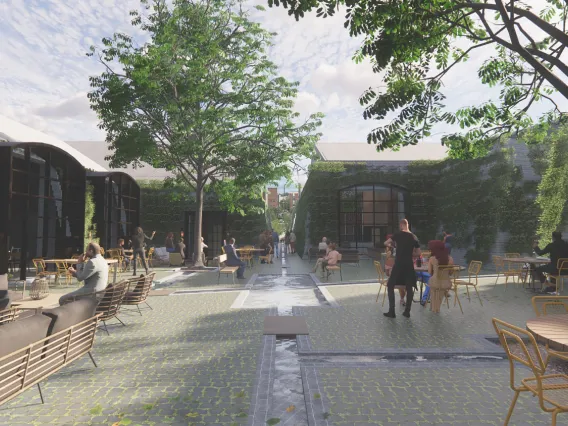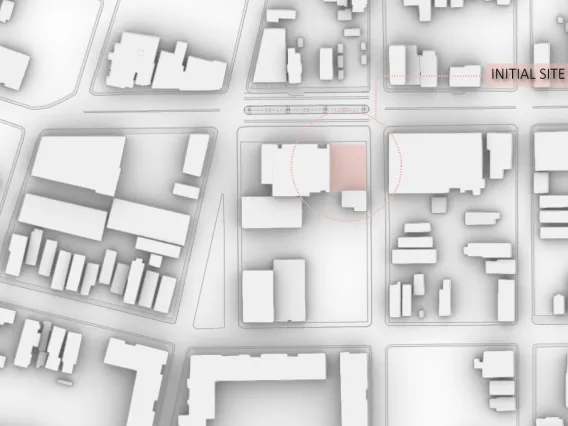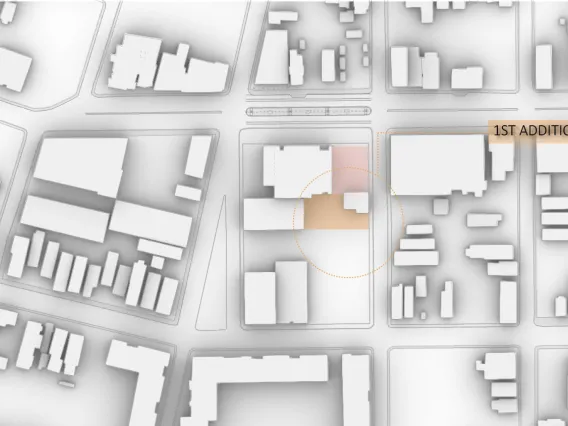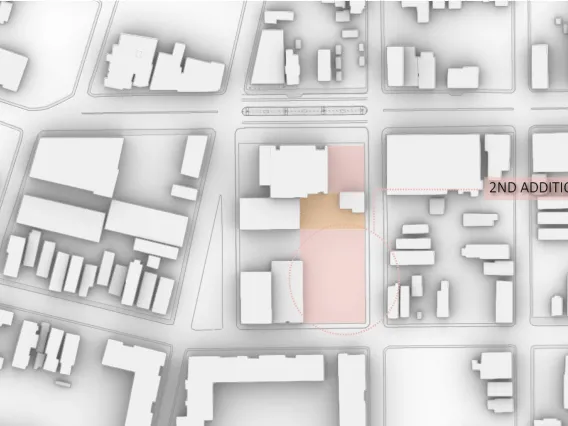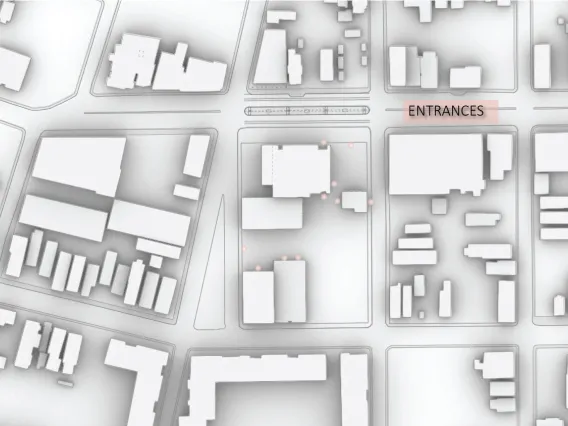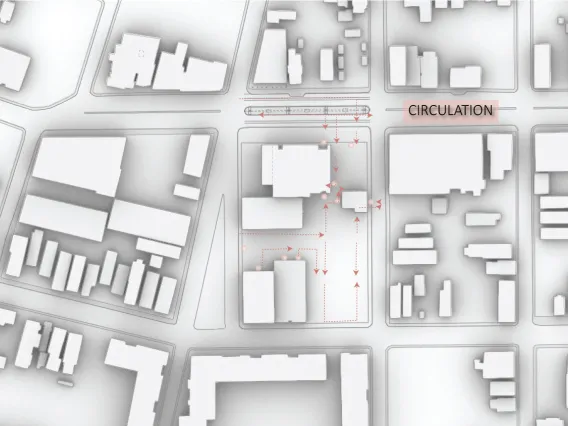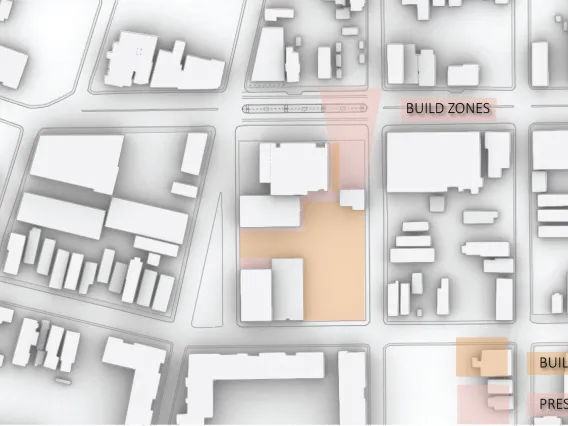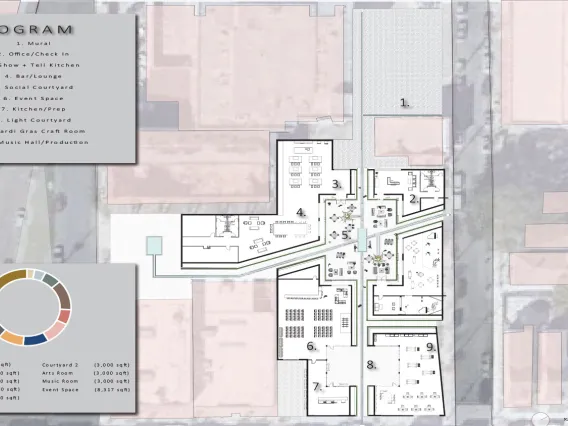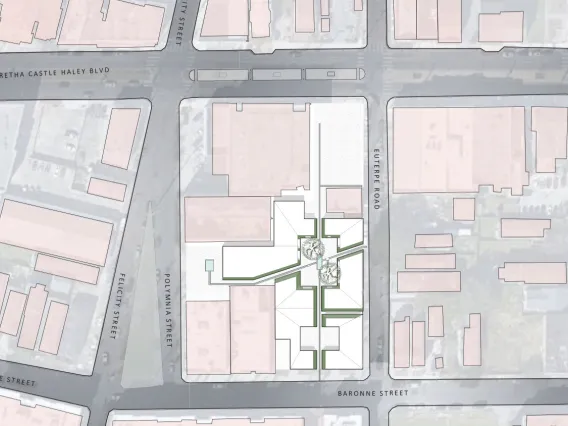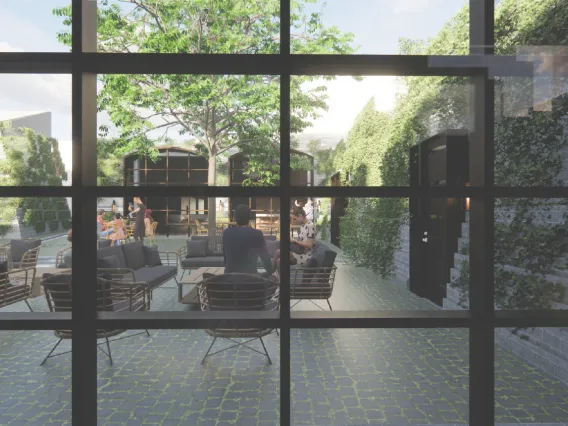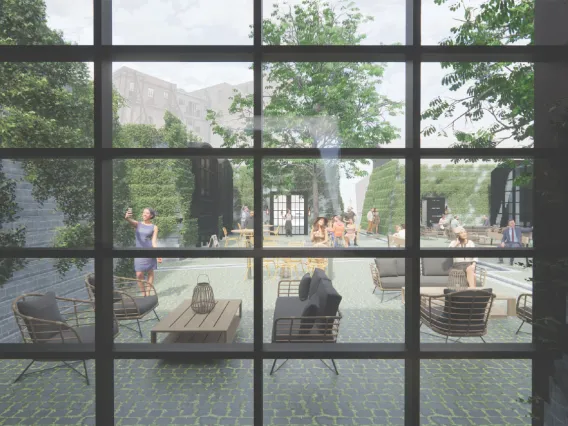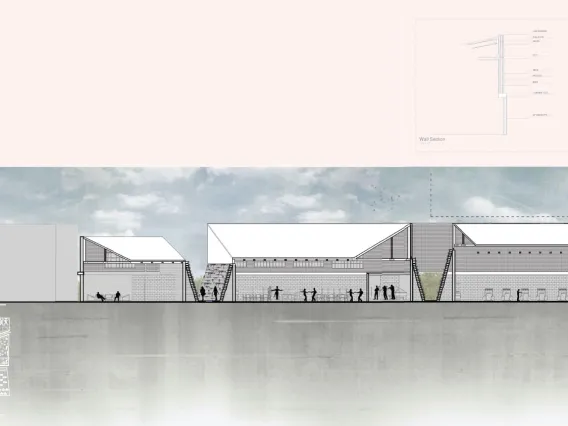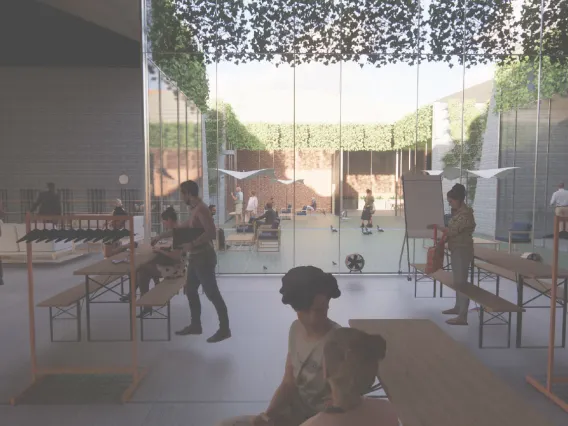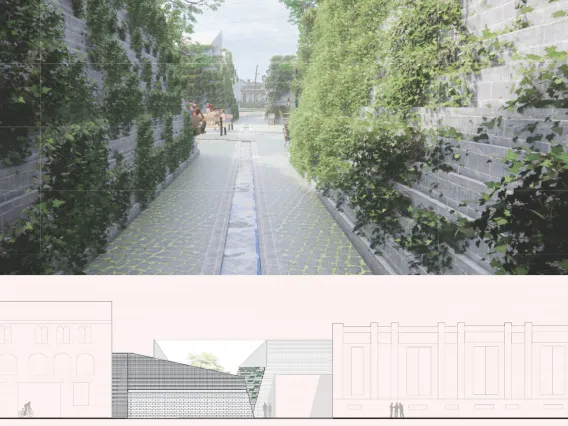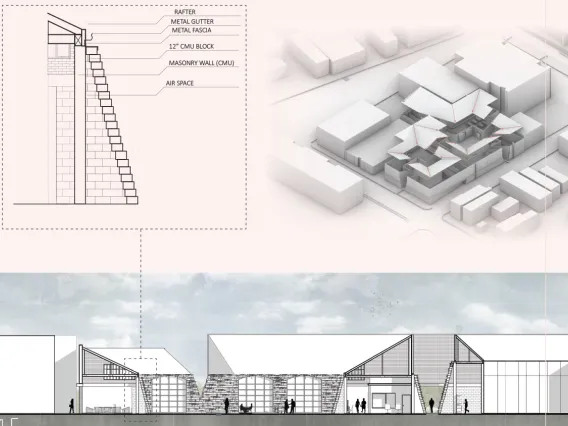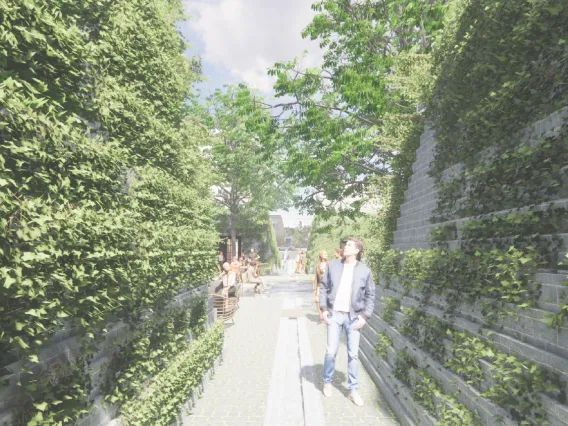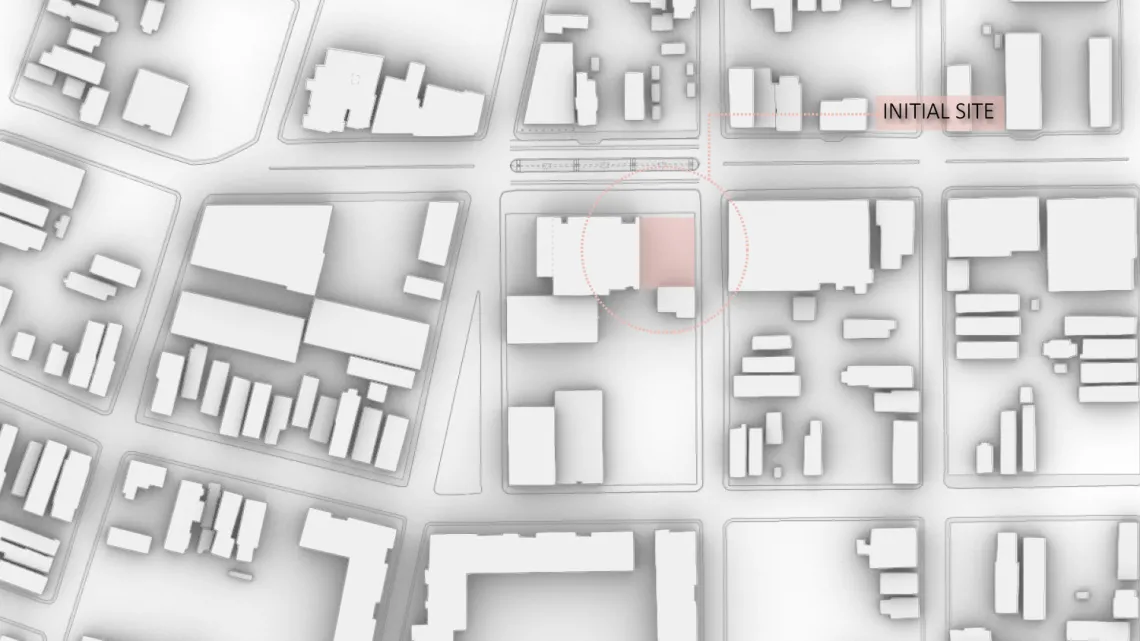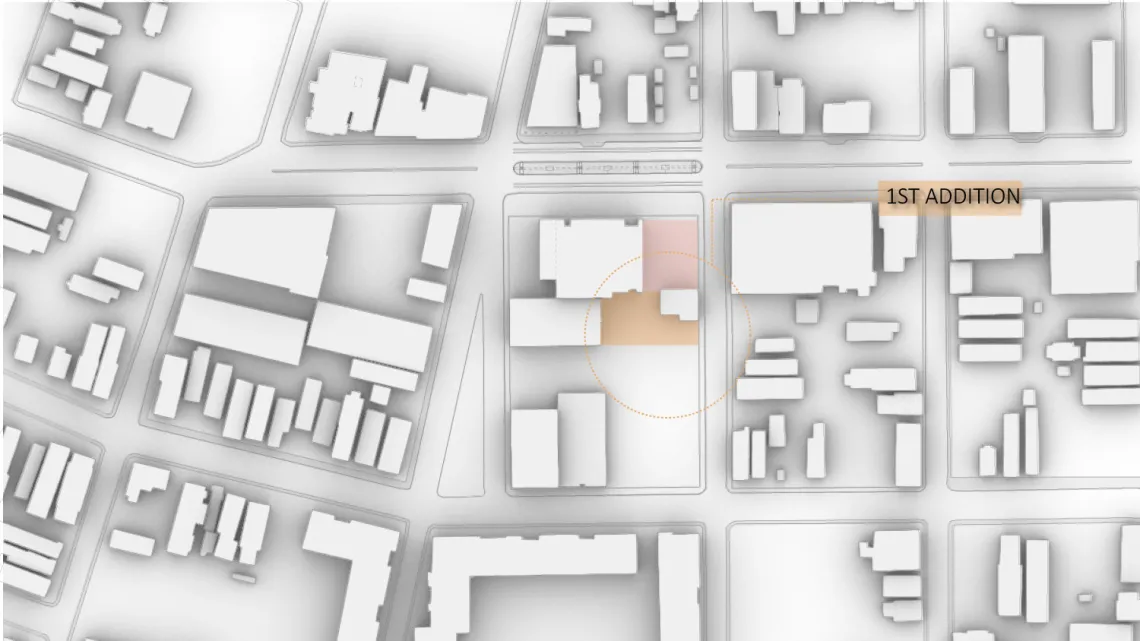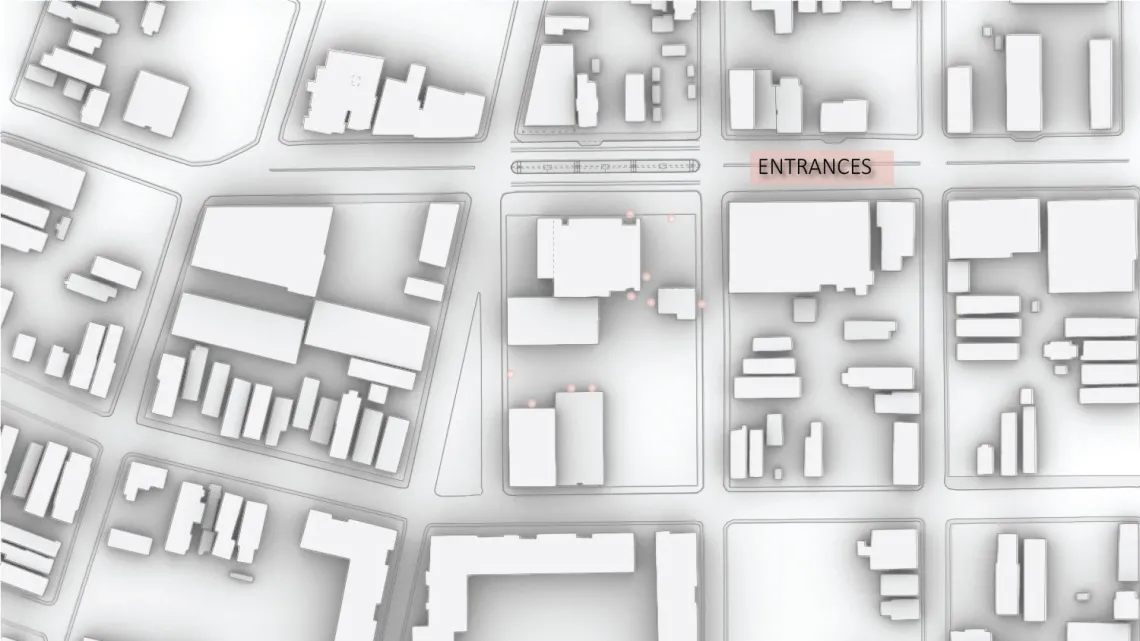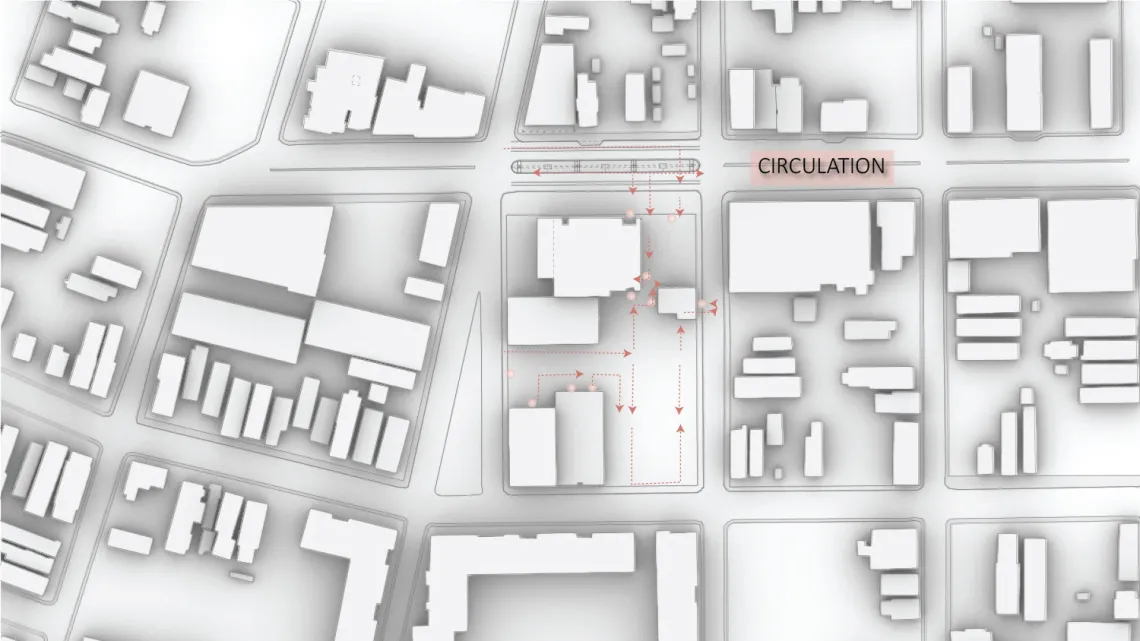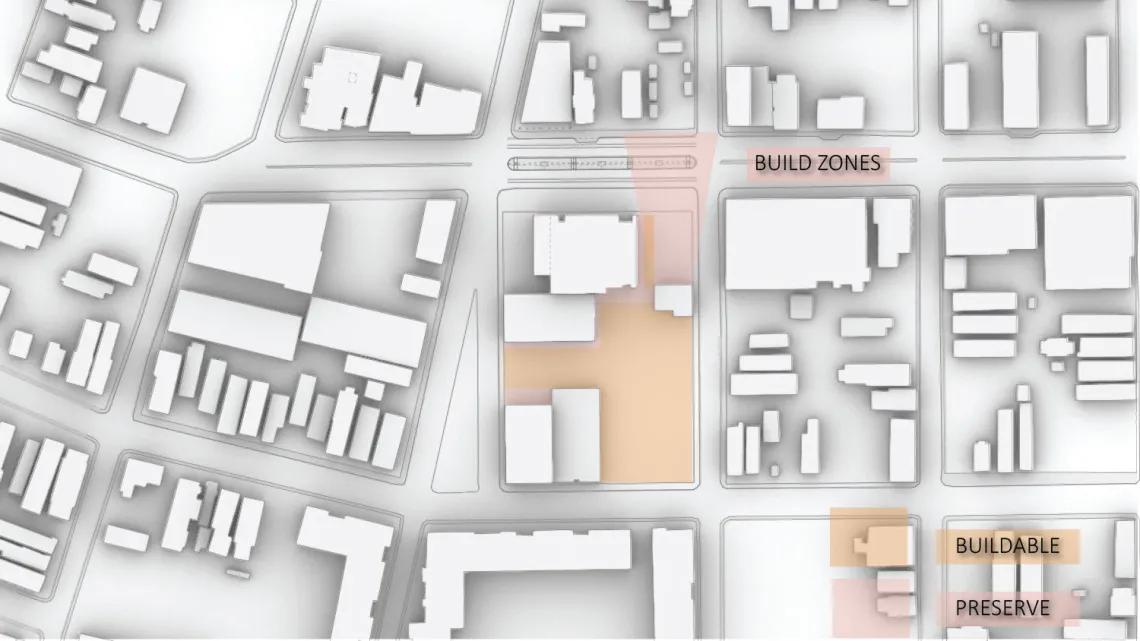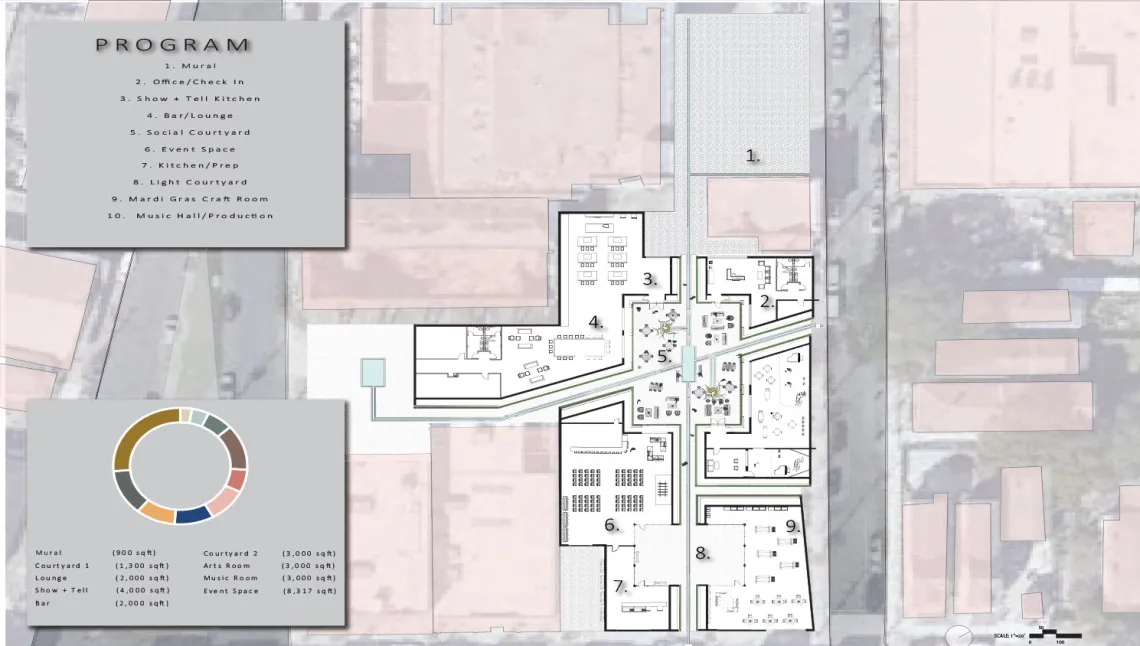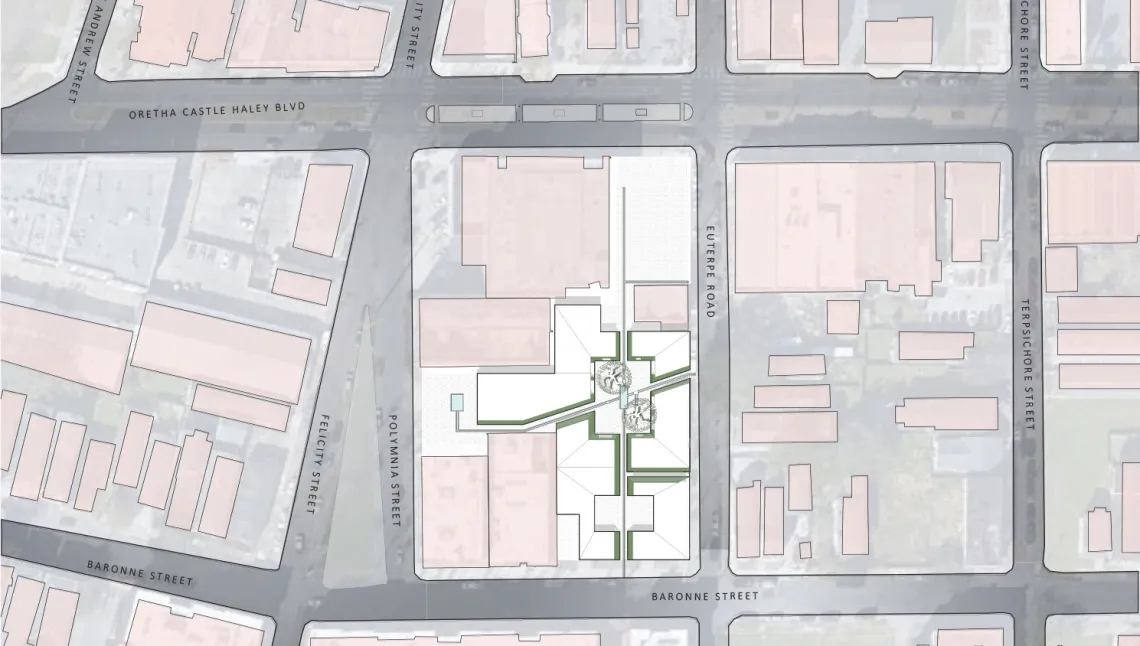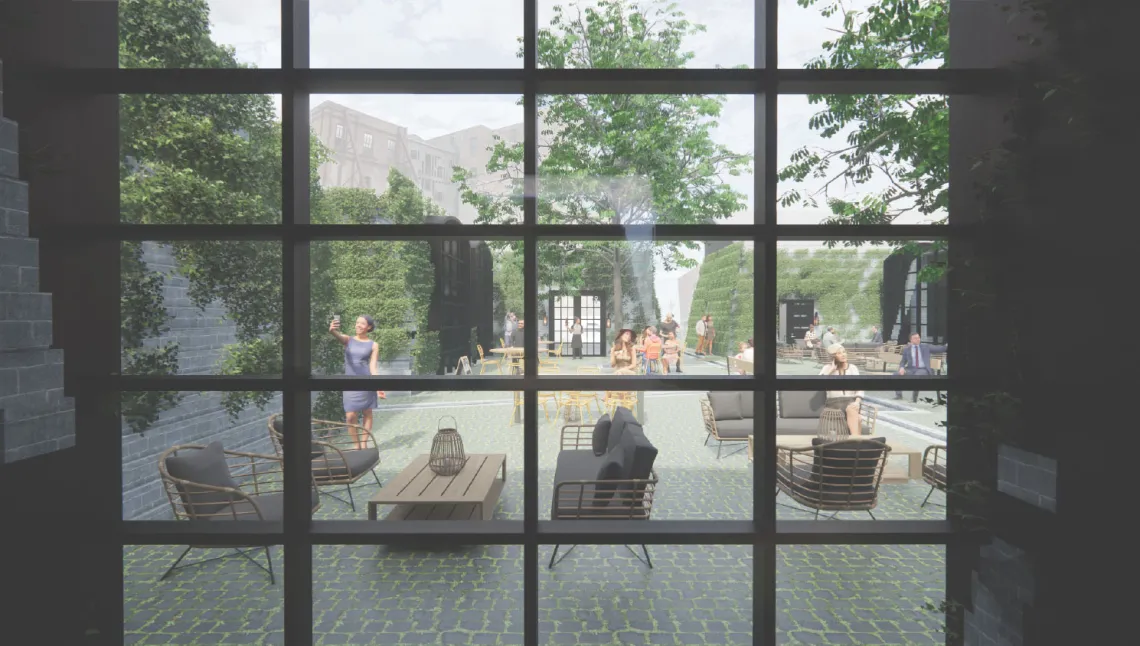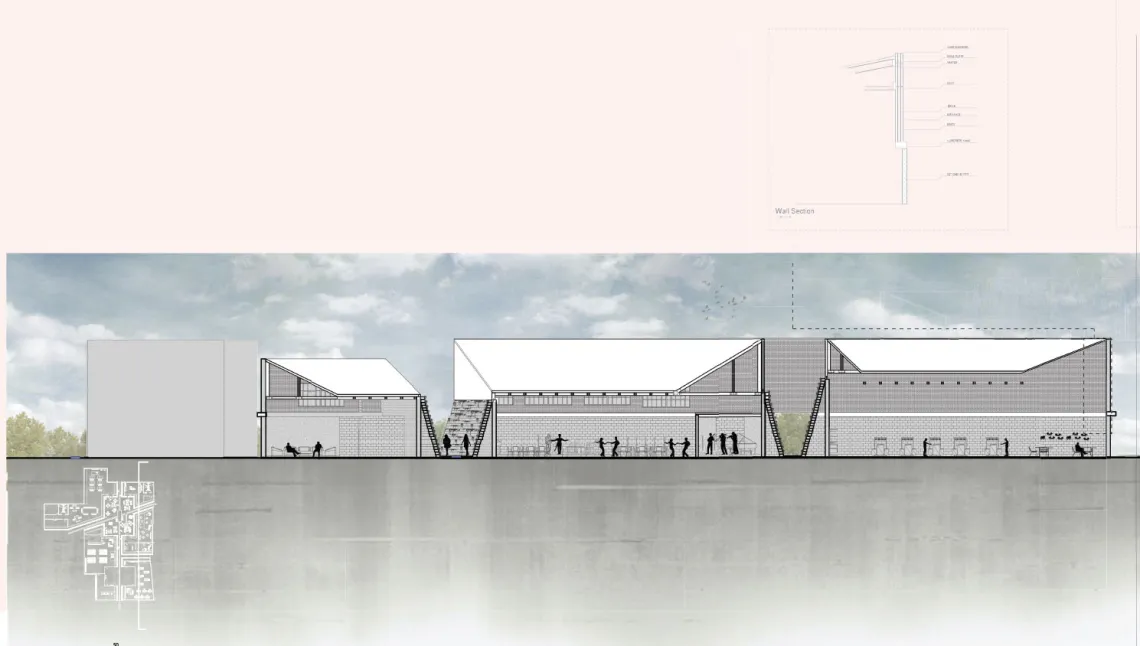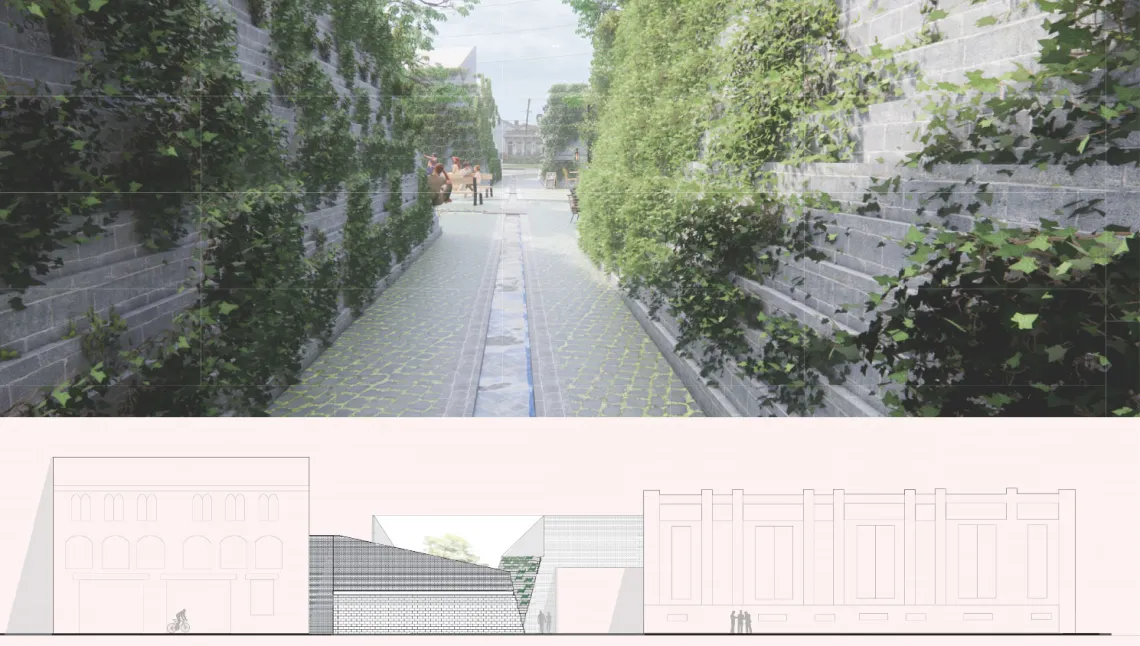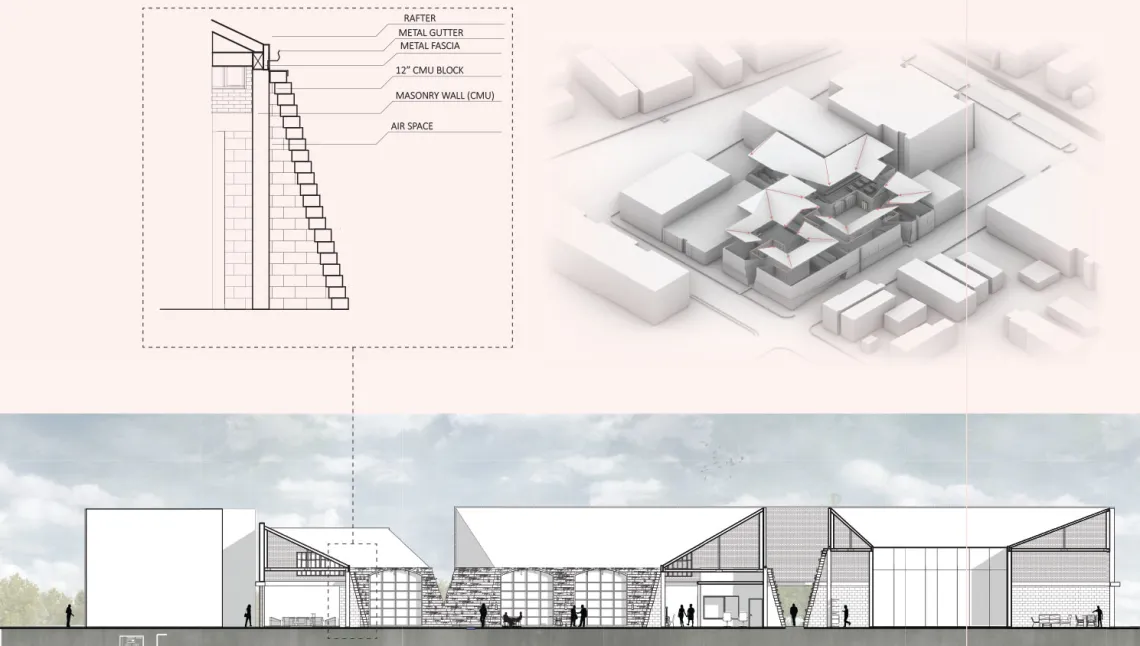A Flash of Green: Kennedy Greyson Finn '20 B.Arch
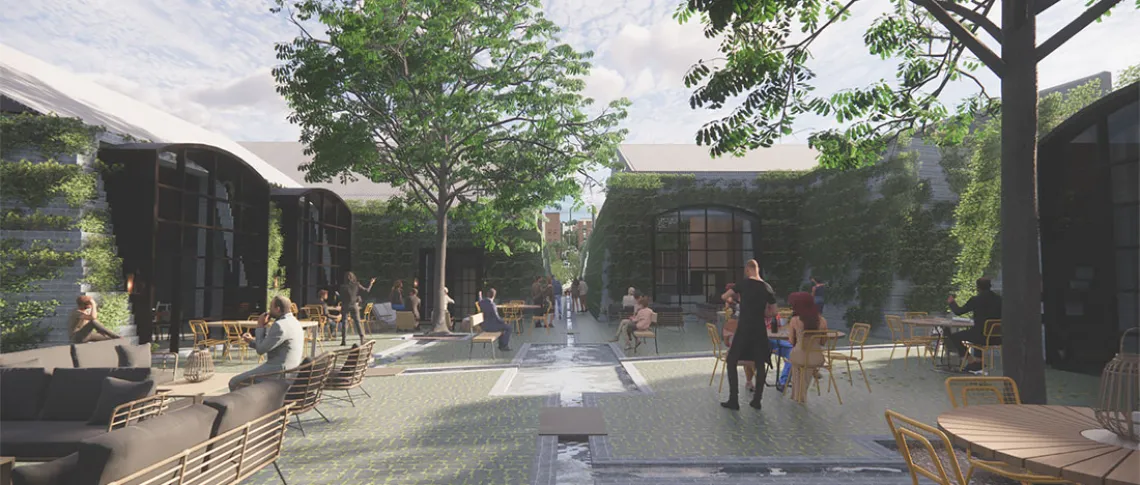
Located in New Orleans's central city, Kennedy Greyson Finn's A Flash of Green proposes a communal space for locals and tourists to come and enjoy what the city uniquely has to offer by incorporating the vernacular of New Orleans in a modern way.
Courtyards in New Orleans rarely show themselves from the street and that’s part of the New Orleans appeal. You will see a small flash of green and want to know the hidden jewel that lies within. Courtyards for leisure are a modern incarnation; in the 18th and 19th centuries they were used as loading and unloading zones for carriages and were valued as cooling zones. The courtyards in this project not only are for cooling and interaction but also hold the entrances into each programmatic space. The project disrupts the typical storefront/residential buildings that lie on the boulevard. Lush vegetation grows from the masonry-tiered walls, intriguing the user to enter. Once inside, the smell of creole cooking envelopes you while your ears begin to sing classic Jazz lyrics.
Overall, the goal of the project is to create a design that emphasizes New Orleans vernacular in a modern way while bringing more social interaction to OC Haley Boulevard.
Image Gallery
Click a thumbnail below to view a larger image and begin slideshow:
All images are by Kennedy Greyson Finn and may not be used or reproduced without express written permission of their creator.

